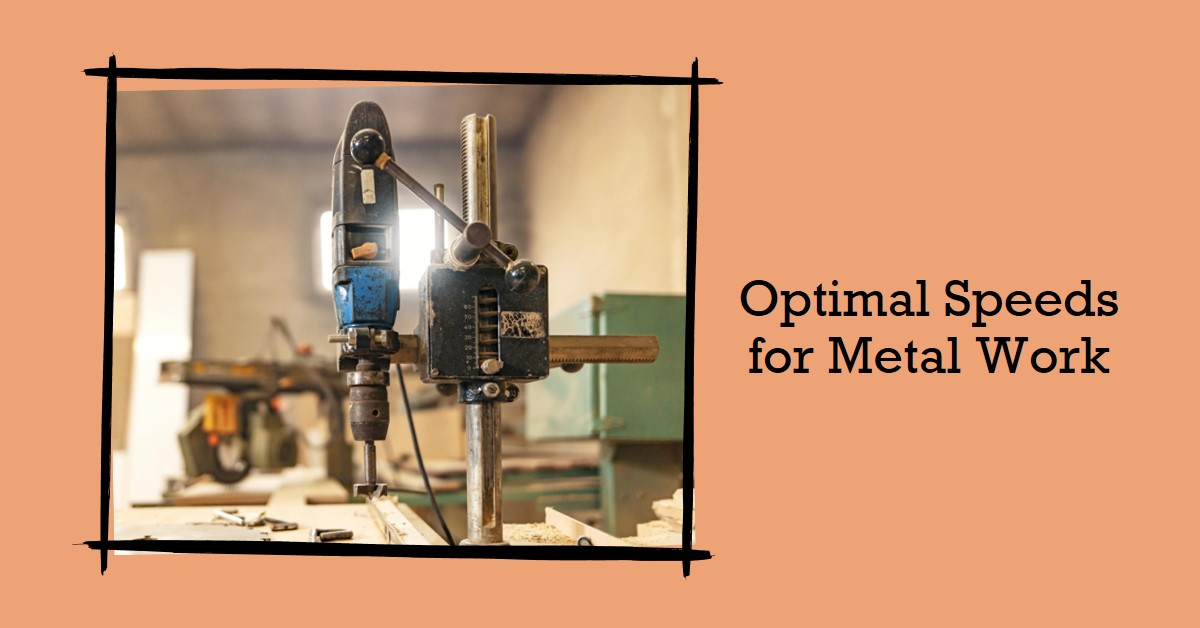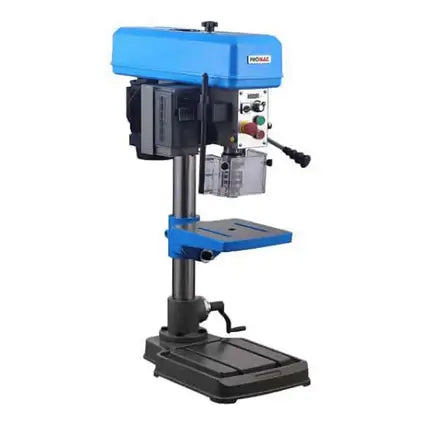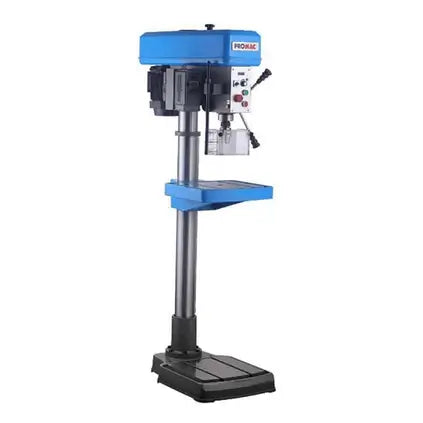
Optimal Drill Press Speeds for Metal Work
In metalworking, selecting the right drill press speed is crucial for achieving precise and accurate results. The speed at which the drill bit rotates can greatly impact the quality of the holes you create, as well as the longevity of your tools.
So, what speed drill press is ideal for metal work? Determining the optimal drill press speed for metal involves considering several factors, including the type of metal, the size of the drill bit, and the specific task at hand. By understanding these elements, you can ensure that you are using the right speed settings on your drill press for maximum efficiency and effectiveness.

Key Takeaways
- Choosing the correct drill press speed is vital for successful metalworking projects.
- Factors such as the type of metal and the diameter of the drill bit influence the optimal speed.
- Determining the ideal drill press speed for metal requires careful consideration and a step-by-step approach.
- Using the correct speed settings can prolong the life of your tools and produce clean and precise holes.
- Take the time to determine the optimal speed for each metalworking task to achieve high-quality results.
Factors Affecting Drill Press Speed for Metal Work
When it comes to metalworking drill press speed, there are several factors that play a crucial role in determining the optimal speed for your drill press. By understanding these factors, you can make informed decisions and achieve the best results in your metal drilling projects.
1. Type of Metal: Different metals have varying hardness levels, which directly impact the drill press speed. Harder metals require slower speeds to prevent overheating and extend the lifespan of the drill bit, while softer metals can be drilled at higher speeds for faster and smoother results.
2. Diameter of the Drill Bit: The size of the drill bit also influences the recommended speed. Smaller drill bits require higher speeds to prevent them from getting stuck or breaking, while larger drill bits work more efficiently at lower speeds to maintain control and accuracy.
3. Properties of the Metal: Consider the specific properties of the metal you are working with, such as its heat conductivity and toughness. These properties can affect the drill press speed, as certain metals may generate more heat and require slower speeds to avoid damaging the drill bit or the workpiece.
4. Specific Task: The drill press speed may vary depending on the task you are performing. For example, drilling pilot holes may require a different speed than enlarging existing holes. Additionally, different metalworking projects, such as drilling into thick plates or delicate surfaces, may necessitate adjustments in speed to ensure precision and quality.
| Factors | Drill Press Speed |
|---|---|
| Type of Metal | Slower for harder metals, faster for softer metals |
| Diameter of the Drill Bit | Higher speeds for smaller drill bits, lower speeds for larger drill bits |
| Properties of the Metal | Varies based on heat conductivity and toughness |
| Specific Task | Task-dependent adjustments to achieve precision |
Understanding the factors that affect drill press speed for metal work is crucial for achieving desired results in your drilling projects. By taking into account the type of metal, the diameter of the drill bit, the properties of the metal, and the specific task at hand, you can determine the optimal speed settings on your drill press and ensure successful outcomes.

Determining the Optimal Drill Press Speed for Metal
When it comes to drilling metal, selecting the right drill press speed is crucial for achieving clean and precise holes. The speed at which the drill bit rotates affects the cutting efficiency and can prevent overheating or damaging the metal. In this section, we will guide you through a step-by-step approach to determine the optimal drill press speed for your metalworking projects.
Step 1: Know Your Metal
The type of metal being drilled plays a significant role in determining the ideal drill press speed. Different metals have various hardness levels and require different cutting speeds. Refer to the manufacturer's recommendations or consult a reliable metalworking guide to identify the specific speed ranges for different metal types.
Step 2: Consider the Drill Bit Diameter
The diameter of the drill bit also influences the speed at which it should rotate. Smaller drill bits typically require higher rotation speeds, while larger drill bits are more effective at lower speeds. Refer to the drill bit manufacturer's guidelines to determine the appropriate speed range for different bit diameters.
Step 3: Analyze the Metal Properties
Understanding the properties of the metal being drilled is essential in selecting the right speed. Hard, dense metals like stainless steel may require slower drill press speeds, while softer metals like aluminum can tolerate higher speeds. Take into account the metal's hardness, toughness, and heat resistance to determine the optimal cutting speed.
Step 4: Consider the Task at Hand
The specific metalworking task you are performing also influences the drill press speed. For example, drilling a small hole requires a different speed than drilling a larger hole or creating a countersink. Evaluate the specific requirements of your project and adjust the drill press speed accordingly.
Step 5: Trial and Adjustment
Once you have determined the recommended speed range based on the factors mentioned above, it's time to start drilling. Begin with the lower end of the recommended speed range and gradually increase the speed until you find the right balance of cutting efficiency and surface quality. Monitor the drilling process and make adjustments as needed to achieve the desired result.
Following these step-by-step guidelines will help you determine the optimal drill press speed for drilling metal. By considering the type of metal, drill bit diameter, metal properties, and specific task at hand, you can achieve clean and precise holes while prolonging the life of your drill press and drill bits.

Conclusion
To conclude, selecting the correct drill press speed is essential for successful metalworking projects. By considering the factors that affect speed and using the recommended guidelines, you can achieve precision and longevity in your drilling tasks.
Remember, taking the time to determine the optimal speed will ultimately save you time and money by reducing wear on the drill bit and producing high-quality results. So, make sure to set your drill press to the appropriate speed for the specific metal and task at hand.
By following these principles, you can elevate your metalworking projects to the next level and enjoy the satisfaction of creating clean and precise holes with ease.

